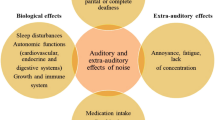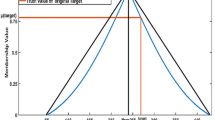Abstract
While developing technology and industrialization factors increase production, they also lead to an increase in energy consumption at the same time. The transportation sector, which is a branch of industrialization, has an important place on the basis of sector in energy consumption. In this study, energy consumption in the transportation sector has been examined, especially in the USA, where freight transport by road has an important place, it has a high potential. Within the scope of the study, energy consumption prediction modeling is made by using artificial neural networks (ANN) adaptive neuro-fuzzy inference system (ANFIS) and Simple Membership Functions and Fuzzy Rules Generation Technique (Fuzzy SMRGT) from artificial intelligence techniques. Artificial intelligence methods were also compared with multivariate linear regressions and multivariate regressions types. Interaction, pure quadratic and quadratic methods were used as multiple nonlinear regression. In the modeling, energy consumption was estimated by taking the highway network length, the number of vehicles and the number of drivers as independent variables. When comparing the prediction models, the determination coefficient (R2), the root-mean-square error (RMSE) and the average percentage error (APE) performance criteria were taken into consideration. In addition, it was shown that the models performed well based on the metrics in the testing phase. When the performances of the models were compared, it was seen that two models obtained remarkable results. According to performance criteria, the best model is obtained by Fuzzy SMRGT and ANFIS methods. R2, RMSE, APE values of the best models are Fuzzy SMRGT (0,978; 208,08; % 0,79) and ANFIS (0,969; 282,69; % 1,06), respectively. The Fuzzy SMGRT and ANFIS models have slightly better performance than MLR, MR, ANN models. It is aimed to use the developed models in the evaluation and management of transportation and energy policies.














Similar content being viewed by others
References
Alam MJ, Begum IA, Buysse J, Van Huylenbroeck G (2012) Energy consumption, carbon emissions and economic growth nexus in Bangladesh: cointegration and dynamic causality analysis. Energy Policy 45:217–225
Altaş E, Aydin MC, Toprak ZF (2018) Açık kanal akımlarında su yüzü profilinin bulanık SMRGT yöntemiyle modellenmesi. Dicle Üniversitesi Mühendislik Fakültesi Mühendislik Dergisi, 9(2), 975–981. (in Turkish)
Arampatzis G, Kiranoudis CT, Scaloubacas P, Assimacopoulos D (2004) A GIS-based decision support system for planning urban transportation policies. Eur J Oper Res 152(2):465–475
Aydın ÇD (2018) Akış Katsayısının Bulanık SMGRT Yöntemi ile Modellenmesi. İnşaat Mühendisliği Anabilim Dalı. Diyarbakır: Dicle Üniversitesi Fen Bilimleri Enstitüsü. (in Turkish)
Bayazıt M, Yeğen Oğuz EB (2005) Mühendisler için İstatistik, Birsen Yayınevi. İstanbul, 198ss. (in Turkish)
BTS, Bureau of Transportation Statistics—U.S. department of transportation. https://www.bts.gov/topics/highway
Cansız ÖF (2007). Enerji Politikalarının Ulaştırma Sistemlerinin Optimizasyonu İle Geliştirilmesi ve Uygulamadan Elde Edilen Getirilerin Ortaya Konması. Fen Bilimleri Enstitüsü, İnşaat Mühendisliği Anabilim Dalı, Doktora Tezi, 352s, Ankara. (in Turkish)
Cansiz OF, Easa SM (2011) Using artificial neural network to predict collisions on horizontal tangents of 3D two-lane highways. Int J Eng Appl Sci 7(1):47–56
Gündüz AY, Mehmet K, Aydemir C (2011) Kentiçi Ulaşiminda Karayolu Ulaşimina Alternatif Sistem: Rayli Ulaşim Sistemi. Akademik Yaklaşımlar Dergisi 2(1): 134–151
Haldenbilen S (2003) Genetik algoritma yaklaşımı ile Türkiye için sürdürülebilir ulaştırma göstergelerinin analizi ve planlaması.
Hüseyin ES, Kalender FY, Hamzaçebi C (2014) Yapay sinir ağlari ile Türkiye net enerji talep tahmini. Gazi Üniversitesi Mühendislik Mimarlık Fakültesi Dergisi 29(3). (in Turkish)
Jang JSR (1991) Fuzzy modeling using generalized neural networks and kalman filter algorithm. AAAI 91: 762–767
Jang JSR, Sun CT, Mizutani E (1997) Neuro-fuzzy and soft computing-a computational approach to learning and machine intelligence [Book Review]. IEEE Trans Autom Control 42(10):1482–1484
Muratori M, Moran MJ, Serra E, Rizzoni G (2013) Highly-resolved modeling of personal transportation energy consumption in the United States. Energy 58:168–177
Öztürk Z (2018) İstanbul’da karayolu yolcu taşımacılığında elektrikli araç kullanımının incelenmesi. El-Cezeri J Sci Eng 5(2):367–386 (in Turkish)
Solak AO (2013) Türkiye'de Ulaştırma Sektörü Enerji Tüketiminin Azaltılması: Bir Senaryo Yaklaşımı. Int J Econ Soc Res 9(1)
Toprak ZF (2009) Flow discharge modeling in open canals using a new fuzzy modeling technique (SMRGT). Clean-Soil, Air, Water 37(9):742–752
Toprak S, Atay A, Toprak ZF (2015) SMRGT yöntemi ile bulanıklaştırılmış veriler için bulanık doğrusal regresyon. Erciyes Üniversitesi Fen Bilimleri Enstitüsü Fen Bilimleri Dergisi 31(3): 1–7. (in Turkish)
Unes F, Yildirim S, Cigizoglu H, Coskun H (2013) Estimation of dam reservoir volume fluctuations using artificial neural network and support vector regression. J Eng Res 1(3):53–74
Üneş F, Demirci M, Kişi Ö (2015) Prediction of millers ferry dam reservoir level in USA using artificial neural network. Period Polytech Civ Eng 59(3):309–318
Üneş F, Demirci M, Taşar B, Kaya YZ, Varçin H (2019) Estimating dam reservoir level fluctuations using data-driven techniques. Pol J Environ Stud 28(5):3451–3462
Works M (2014) Fuzzy logic toolbox, user’s guide R2014a. The Mathworks Inc., Natick
Wu X, He X, Yu G, Harmandayan A, Wang Y (2015) Energy-optimal speed control for electric vehicles on signalized arterials. IEEE Trans Intell Transp Syst 16(5):2786–2796
Yin X, Chen W, Eom J, Clarke LE, Kim SH, Patel PL, Yu S, Kyle P (2015) China’s transportation energy consumption and CO2 emissions from a global perspective. Energy Policy 82:233–248
Zhang XP, Cheng XM (2009) Energy consumption, carbon emissions, and economic growth in China. Ecol Econ 68(10):2706–2712
Zhang C, Lin Y (2012) Panel estimation for urbanization, energy consumption and CO2 emissions: a regional analysis in China. Energy Policy 49:488–498
Acknowledgements
The data used in this study were obtained from U.S. Department of Transportation (USDT). The author wishes to thank the staffs of the USDT who are associated with data observation, processing, and management of USDT.
Author information
Authors and Affiliations
Corresponding author
Ethics declarations
Conflict of Interest
The authors declare no conflict of interest.
Additional information
Editorial responsibility: Samareh Mirkia.
Rights and permissions
About this article
Cite this article
Cansiz, Ö.F., Üneş, F., Erginer, İ. et al. Modeling of highways energy consumption with artificial intelligence and regression methods. Int. J. Environ. Sci. Technol. 19, 9741–9756 (2022). https://doi.org/10.1007/s13762-021-03813-1
Received:
Revised:
Accepted:
Published:
Issue Date:
DOI: https://doi.org/10.1007/s13762-021-03813-1




